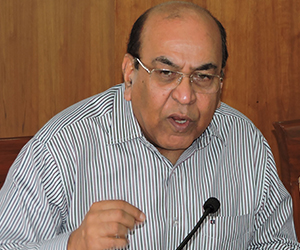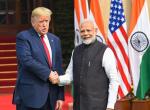At the outset, I must warn my readers that this is going to be more about the problem than the solution; that is because the problem itself needs a detailed definition before a solution can even be considered. The Indian Armed Forces and mainly the Indian Army have systematically been subjected to image buffeting for some time. In the last few months it has increased exponentially and the last few weeks has seen a virtual deluge. Many criticize the Services for their weak public relations (PR) machinery and inability to counter the tirade. They get drawn center stage into controversial issues without ever knowing how to counter the wild allegations or unnecessary insinuations which affect self-esteem of officers and troops alike. Just in case you do not know, rumor mills in the Services are rife and social media has come to the assistance of all the detractors who wish to dilute the carefully built self-esteem through canards against the leadership, against the prevailing ethos, against capability and against everything good which the profession of arms has always stood for.
Two observations to get this discussion rolling. First, right across the international border in Pakistan exists the most professional PR and strategic communication machinery ever put together by a set of Armed Forces anywhere in the world. Adversaries must always be given their due if lessons have to be learnt. The Pakistan Armed Forces set up the Inter Services Public Relations (ISPR) Directorate in 1949 as an institution of the three Services to enable outreach to civil society. It is largely manned, led and managed by uniformed personnel. Over time the ISPR has virtually become the psychological warfare center of the Pakistan Armed Forces. It is a force multiplier, managing perception within the Pakistan Armed Forces, within civil society of Pakistan and most importantly abroad. Its specific task in relation to India is to run the most astute psychological warfare campaign 24x7 with the Indian Armed Forces the major target. Its latest achievement – the Pakistan Army’s inclusion among the ten most deadly armies of the world. The Indian Army is of course excluded. Agreed these gradations are dime a dozen but all this adds to international image.
Second, on our side, PR is grudgingly executed by the three Services making use of organizations which are ad hoc and unauthorized because institutionally they are not supposed to speak to the public or the media. That is only the purview of the Ministry of Defence (MoD) and its archaic PR machinery termed PRO Defence. It has a set of people who may be professional PR persons but know little about modern psychological warfare, perception management and strategic communication. There are a few uniformed people to assist in this too but have little idea about the General Staff requirements of outreach. There are Regional PROs at various stations who once again report to the PRO Defence, are not under the local formation commanders or staff and hence completely out of sync with the Army’s needs. It is a tailor made situation with a well-manicured organization to shoot itself in the foot. To imagine that in today’s world a set of armed forces can be without a General Staff oriented PR/Information machinery is actually laughable. But, then that is how backward we are in our thinking on as important as subject as Information.
The stark difference in the approach towards public information, perception management and strategic communication between the Pakistani defence establishment and its Indian counterpart is half the story of the monumental failure in image management of the Indian Armed Forces and the even larger failure of strategic communication to our own public and the adversaries. Before I am taken to the cleaners on equating the public and the adversaries let me clarify that in the world of information management targets are many and methods diverse; it is just that our own public and the adversaries get clubbed under the generic term – targets.
The Army has made some brave efforts but very hesitatingly. It first had a cell under its Military Intelligence Directorate (MI Dte) which did some work related to strategic communication. During Kargil operations, the Military Operations Directorate (MO Dte) took information handling under its wings so that there could be a direct interface with the media between officers in connect with ongoing operations. It was in the PR domain and less in strategic communication; yet a transformational effort no doubt. Subsequently it was decided to establish the Additional Directorate General of Public Information (ADG PI) which became the Army’s interface with the media although it is not an organization which has official sanction. It is manned by pooling strength from other establishments and is always under threat of being wound up. It has major problems functioning with the PRO Defence who perceives ADG PI encroaching on its space. To confuse the issue further an organization called Additional Directorate General of Information Warfare (ADG IW) exists under the MO Dte, purportedly looking beyond public information with the GS orientation that I spoke of. Why both ADG PI and ADG IW cannot be clubbed together under a DG Information to allow both arms, PR and GS Information/strategic communication, to work together is primarily because of the ad hoc nature of that most important entity, ADG PI.
That the necessity of keeping the Army outside the purview of its own PR is an inheritance of the Nehruvian suspicion of the Army is a foregone conclusion. It was unthinkable to allow uniformed persons to speak to the media or create a niche image. Will the Armed Forces ever emerge from that continuum of awkwardness? The classic example is the inability of the Army to even point out some obvious wrongs to the Government through the medium of official communication and building opinion in the unofficial domain. Take the example of the absurdity of the Army having to display placards announcing that it was ‘the Army’ during the recent agitation in Haryana because all these years no one in Government ever bothered to respond to the observation that disruptive pattern combat dress should be applicable to the Army alone because of the nature of operations. The CRPF can have its khaki oriented combat dress purely for the Red Corridor. However, the moment exclusivity of the Army in relation to its original uniform is diluted the projection of its arrival in aid to civil authority becomes meaningless as far as the psychological effect is concerned. See what happens in J&K where the police presence all over Srinagar is perceived as Army presence. If official communications fail then the use of PR machinery to effect unofficial communications and persist with an issue which has not been responded to is a must. This time after throwing up the issue the social media is all quiet again. It is about time that reference to context is used to continue the campaign to allow the exclusivity of the Army’s image.
Let us take one more example and leave further examination and solution finding to another piece to be followed up. This one relates to strategic communication in the General Staff domain. The Army gets criticized by well networked human rights activists and increasingly by many ill-informed Indian citizens on the issue of Armed Forces Special Powers Act (AFSPA). It is projected by all these organizations and Kashmiri activists as if the Army is on a deliberate rape and killing spree in J&K. Invite an activist to a debate and you will discover he/she has probably never read the Act, its seven sections, the conditions which forced its enactment, its dilution and mitigation under Supreme Court directions and the rules of engagement that the Army follows. The Army’s strategic communication machinery remains mute and has no intellectual approach to educate Indian citizens. The battle of perception was lost many years ago. This is why I now believe that AFSPA is a liability being used by all shades of adversaries to beat the Army and the Government. It should be replaced by a legislation which empowers and projects the Army as a rights friendly organization. It is not difficult if the Army applies its mind and convinces the Government that strategic communication is part of its General Staff responsibilities. If anyone it is the Government itself which needs to take a call on the rights issues which are used by activists to beat it every day.
When I placed in social media some issues concerning leadership and image I received a deluge of response. One of these is reproduced – “Please understand the impact of all the present issues facing the Indian Army on the morale of troops and officers. A nation which does not allow its army to stand up and speak in a voice that counts...will one day be relegated to the dustbin of history as a failed state”. That is a strong statement indeed. If anything it should trigger concern in a Manohar Parrikar led MoD. He is one Raksha Mantri who can drive the review of the entire issue of strategic communication and PR because of his pro-activeness and willingness to comprehend threats from following status quo. The first step may actually be a peep across the border to see how that seventy year old organization does it, the ISPR of Pakistan. The PLA of China does much of its strategic communication through its National Defence University (NDU) as do so many other armies of the world. Our NDU is still a couple of light years away.
Published Date: 14 th March 2016, Image Source: http://zeenews.india.com
(Disclaimer: The views and opinions expressed in this article are those of the author and do not necessarily reflect the official policy or position of the Vivekananda International Foundation)










Post new comment